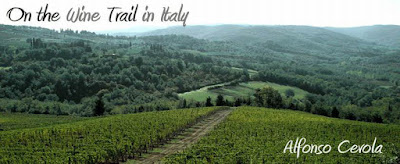Weeks into this travel for business (O-N-D) I have also been trying to shed pounds, in preparation for the holidays. Home now means a place where I can seek fresh, unadulterated meals, away from what Frank Bruni called “the growing ranks of the restaurant-obsessed.” What the Italian-American experience started out to be was nourishment and comfort. 100 years later it is seems to be more about comfort and recreation.
This week I was in the fourth largest city in America, which had at one time a significant Italian-American population. Generations have sanded away their genetic memories; life in the New World has taken root. And with it comes a changing face.
Later in the week, back home, in the peace of my little island, with my glass of Chianti, I finally felt satisfied. Restaurant after restaurant, meal after meal, it started feeling more like a battle. Remember to ask the server if the dish doesn’t have these ingredients (truffle oil, too much garlic, balsamic vinegar, cream, ad nauseum). I never remember to ask. They just bring it and then I remember. And then try to figure out how to eat what is on the plate that will do the least harm. This is not what the Italian table is about!
I found myself getting more and more upset, for after many years pounding the streets, it appears the vision I have been given is not on the screen of the future. Why not take a perfect dish like Spaghetti Carbonara and change it? It’s our culture now, change, change, change, dammit!. Did you like the way Google used to be? Wasn’t it easy to use Google maps? Well, let’s change it and “improve” it, make it more complex, more interesting. More difficult to understand. Everywhere you turn, someone is making something different. The problem? This doesn’t often equate with better. And so it seems with the Italian-American experience in regards to food. And wine.
A few months ago I ran into Alessia Antinori in New York. I was having a drink at Marea with Antonio Galloni, catching up and talking shop. Alessia is high energy, engaged, “on” at all times. She was excited about her family’s new winery in Tuscany. But it seemed the thing she was even more animated about was bringing back to life her grandfather’s winery and vineyards in Lazio. The Fiorano estate. “You must come to visit it,” she gently invited. She was imbued with an enthusiasm for which there was fortunately, no vaccine. I was all in.
The reality on the ground back home is that the wines of Fiorano and Lazio have been pre-empted by a recreational wine landscape. We’ve gone from critters on the labels to malapropisms and mondegreens. “Italian wine with bad tattoos,” was one interpretation. Alberico Boncompagni Ludovisi, if he had known it was coming to this, probably wouldn’t have stopped at pulling out his vines; he might have tried to pull them all out in Lazio. But he didn’t and now the miscreants rule the end-caps.
“What this is doing is sending the enthusiast back to their gardens, their kitchens and their cellars,” another voice opined. Indeed. For this one in the 21st century, the Italian-American experience will never be about recreational dining and hip-hop DBA labels. I want to know how my eggplant (or rib-eye) has been raised, not how much cream you can pour over it. I want my Chianti to taste like Sangiovese, not pheromones and pudenda.
Marcella Hazan recently passed on. She was one of those who turned the light on in America regarding Italian cooking. Her mantra was “simplicity.” A few years ago she wrote a defense of cooking and one line especially resonated with me: “It isn’t only about food the way love isn’t only about sex.”
Young people in the kitchens today are in the throes of their biological imperatives. Salt is the new testosterone, improvisation on classic themes is de rigueur. They are working out their themes, their melodies, their passions, their urges, all on the plates they set before us. Those who have had more time to see the world, to taste the simple, classic foods and wines from Italy, they are not “all in” with these experiments. But fashion is rowing the boat, for now.
It was once the standard that a musician, let’s take a jazz musician, would practice, sometime for years, before they would play for an audience. Even someone like Charlie Parker practiced for hours a day, year after year. Mastery could only be achieved after struggle and making the mistakes, behind closed doors. On the path the 21st century Italian-American experience is going vis–à–vis food and wine, we show it all, bare the arms, show the tattoos, good and bad. Don’t like it? You don’t see Kay? Too bad, there are folks on a waiting list to get in. Move along, mossback.
We will see. I’m in a minority on the path the Italian-American experience is going along in regards to food and wine. I’m not buying in. And anyone who has had the sublime pleasure of eating Rigatoni con la Pajata in a trattoria in Rome most likely isn’t buying in either. We know too much to go back to so-so.
Pass the Fiorano, please...
written and photographed by Alfonso Cevola limited rights reserved On the Wine Trail in Italy
wine blog + Italian wine blog + Italy W





